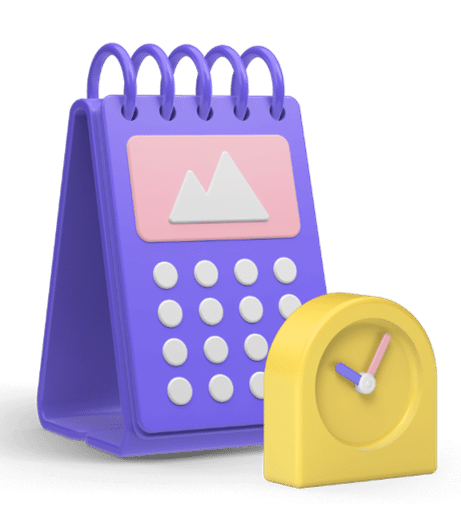
How to Choose the Right Image Format for Web, SEO, and Design?
In digital marketing, images are much more than decorative elements: they impact site speed, user experience, conversion and

We know that this is a highly competitive world; We don't want our company to sink. We must be attentive to each new tool that promises to improve our activity.
Currently, what is setting the trend is CRM. It is an approach rather than just software.
Knowing the implementation phases of a CRM represents a noticeable improvement in economic terms and an incredible optimization in resource management.
Next, we will tell you what a CRM consists of, what the implementation phases of a CRM are and what the benefits are for your company.
Always keep in mind that CRM is more than enterprise resource management software. It is an approach that will help you optimize your activities. Stick around to find out how it's implemented.
Quickly, let's look at what exactly CRM is. This term is the acronym that stands for Costumer Relationship Management. In Spanish means Customer Relationship Management.
Currently it refers to software that facilitates corporate and business management, optimizing your resources (such as capital, the joint work of people, and time); In addition, they allow us to strengthen relationships with current clients and leads.
However, seen from another perspective, CRM is a way to direct all business efforts more efficiently. It is, let's say, directing all the power of our company towards a common objective.
How is it possible? Easy: CRM allows all the departments of your company to speak the same language, their work is unified. Information is shared more fluidly, greater amounts of data are processed in less time.
CRM basically serves to ensure that your company is governed better in terms of efficiency. Because keep in mind that being efficient does not mean working more and very hard; It means, rather, that your work reports the best results with the least amount of resources invested.
There, in efficiency and optimization, lies the difference between having and not having CRM. You save time, staff, money, and retain old customers while still harvesting leads. All this may sound great to you, it's true. But it is not achieved automatically or spontaneously.
A prior study of your company is necessary, studying its needs; You have to see what type of CRM you need (because although they all do the same thing, they don't do it in the same way: the one that works for one company may not work for yours).
You have to see which processes most urgently require optimization, etc. The list of tasks that must be completed beforehand is long, but you should know that You can count on us so that the CRM implementation is quick and achieves the expected results.
In the world of business and digital marketing it is necessary to stay at the forefront when it comes to technological tools. But that does not mean having to acquire every new product or tool that promises heaven and earth for our company.
The acquisition of these resources is an important step, and must be considered meticulously. A decisive factor has to do with the process of CRM implementation. And you may be wondering, “what are the implementation phases of a CRM?”
You should know that the implementation phases of a CRM do not consist of simply downloading the software and installing it on each and every one of the technological equipment in our company and hoping for the best. CRM does not work miracles; although it is susceptible to deep automation. However, for such automation to be effective, efficient, and involve a real optimization of resources, a series of essential phases must be followed.
Although each company is particular in itself (since each one has a different history, and has carried out different processes, with different results), it is possible to develop a general framework of action applicable to all companies in order to effectively implement CRM. Below, you will find the phases you must go through.
What must be considered?
Any company that has ventured into the digital world essentially consists of four elements. These are: Processes, Strategy, Technology, and People.
The CRM will help you direct these elements in pursuit of a common goal: streamlining the sales cycle, customer loyalty, breadth of leads, etc. With this in mind, what comes first?
How is it possible to intervene in the functioning of something if, previously, an adequate diagnosis is not made? It is impossible. You have to know what things do not work as expected; which processes fail most frequently; what kind of tools or processes or even entire strategies are starting to become inefficient.
Specific questions are asked, like how effective is communication between departments? How is accounting carried out? Is communication with clients the best that can be offered?
An evaluation prior to the implementation of CRM would help determine the shortcomings and weaknesses of our company. Here, the four elements mentioned above are examined in some detail. This phase of preparation, analysis and general mapping of the company is one of the most important to guarantee the final results of CRM implementation.
Your company's weaknesses ultimately lead to unnecessary difficulties. They are like obstacles that hinder the achievement of the goals that your company wants to achieve. We must see how to overcome such difficulties; or in other words, how those weaknesses are strengthened.
To this end, specific objectives are established, by virtue of which an appropriate action plan will subsequently be thought of and executed. The importance of this phase lies in the fact that it clarifies the panorama we have in front of us.. It lets us see where CRM can help us more definitively.
The implementation phases of a CRM, as you already know, are not simply reduced to the installation of software. The ground must be prepared where the CRM will act, and it is also necessary to know what type of software (what features) is the most appropriate.
CRM, no matter how much automation it can offer, does not do everything on its own. The relationship between technological resources and human resources is fundamental.
Because, again, it's not just software, it's a change of focus. The staff at your disposal must be receptive to such a change, and that means the socialization of a specific action plan contemplated in the implementation phases of a CRM.
What is the type of CRM you really need? There are many options on the market, and although they are similar in terms of the advantages they offer, not all of them will be equally effective. There are very specific applications and tools that are what you need and with which you will optimize yourself better.
Most likely, the data and information you have prior to the implementation phases of a CRM will serve as input. It is necessary to know if the information you have is usable, and if it is, how you could articulate it to your new approach.
The management of these resources will be streamlined, so the pace of the company will grow exponentially. The company needs to know how it will face this growth, so as not to get stuck.
But it is not enough to implement the CRM and get it running. A subsequent analysis is necessary to identify possible gaps that may remain, or new administrative needs that may arise.
By doing so, it will always be possible to overcome such difficulties and always keep the direction of our company ascending.
Remember that at Auladig we are always attentive to your concerns about CRM. Contact us for a quote and to start implementation in your company.

Do you want to continue receiving more information of interest?
Subscribe to our community and keep learning.
Articles that may interest you

How to Choose the Right Image Format for Web, SEO, and Design?
In digital marketing, images are much more than decorative elements: they impact site speed, user experience, conversion and

Ways to Do Internet Marketing: Strategies to Stand Out in the Digital World
Today, having an online presence isn't enough. The brands that truly stand out are those that implement smart, well-executed strategies.

What is Analytics for and why is it Key to your Digital Strategy?
In the digital world, measuring is as important as acting. With thousands of visits, clicks, and conversions occurring every day, understanding user behavior is key.

Master Digital Marketing from Scratch and Take Your Business to Success
In an increasingly connected world, knowing how to do digital marketing is essential for any company, entrepreneur or personal brand looking to grow in

Why is it important to conduct market research in digital marketing?
In a market saturated with products, services, and advertising messages, knowing your audience in depth has become a strategic necessity. The study of

What is the Concept of Marketing and How is it Applied?
In today's business environment, understanding the concept of marketing is essential for any organization seeking to connect with its audiences and generate value.

